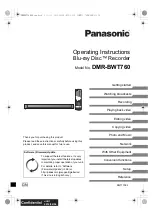
Page 75
DD8
plus Version 2.20 - September 1998
** IMPORTANT NOTES REGARDING TRACK MONITORING DURING RECORDING **
On analogue multi-track tape recorders, we take seamless punch-in/out for granted. How-
ever, this is much more difficult to achieve on hard disk recorders.
The DD8 has seamless punch-in/out and to achieve this, the DD8 plays previously recorded
material in the background so that, when you punch-out manually, the track is ready to play
back immediately with no gap at the punch-out. I.e.:
PUNCH-IN
PUNCH-OUT
PLAY
PLAY
MUTED
ORIGINAL RECORDING
NEW RECORDING
This means that in most cases, the DD8 will drop in and out of record pretty much like a
normal MTR. Usually, on most hard disk recorders, due to disk speed restrictions and SCSI
bandwidth, there is a gap of several seconds or more at the point of drop-out. This is not so on
the DD8 and it is possible to punch in and out seamlessly on mono and stereo tracks.
However, when using an MO, because these are slower than hard disks, you may notice
tracks dropping. Also, when recording four tracks, there may be gap in monitoring when you
drop out of record. The actual recording will be fine - only the monitoring at the point of punch-
out will be momentarily affected.
As mentioned, though, under normal circumstances, when recording stereo or mono cues
onto either a hard disk or MO, you should not notice this.
Pressing Mode (F4) moves the cursor to the Record Mode field. The available selections are :
NORMAL
This is the default mode where new recordings are made onto an unused
area of the disk. Note that recording in this mode is non-destructive (ex-
isting audio on the disk is not overwritten and it is possible to recover the
original audio using the UNDO function).
DESTRUCTIVE
This is a special type of record mode that behaves more like traditional
tape.
As mentioned, recording on the DD8 is non-destructive by default but,
sometimes when recording, it is possible to build up a lot of redundant
audio on your disk, especially if you are dropping in and out over the
same point time and time again (for example, when recording dialogue).
As a result, your disk can soon become full of audio you cannot access or
use. The DESTRUCTIVE record mode goes some way to overcome this.
SYSTEM - 8
















































